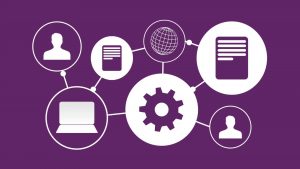The software we install on our computers is one of the biggest potential security risks. Even known software can be altered to transmit our data in the background. There are reports of hackers inserting malware into legitimate software downloads available online. Often, even the vendor does not realize that the legitimate download is spreading malware. Here are a few ways to detect any suspicious activity:
Almost every application on a modern computer will make outbound connections to the internet. Most of these connections are for updates, licensing etc. However, using applications like NetLimiter on Windows and Little Snitch on OS X, you can keep an eye on what connections are made from which apps.
Another common activity of suspicious software is to set itself to run on startup after the installation is complete. Malware does the same thing, except hidden in some obscure corner of the hard drive. Applications like BlockBlock on OS X will block and alert you when an application attempts to set itself to run on startup.
Do not plug in any unknown devices to your USB port. If a file transfer is required from an unknown USB key, ask them to email it instead. Do not allow anyone to charge devices on a laptop, even e-cigarettes have been known to carry Malware that installs when charging on a computer. Any charging should be done directly off a wall charger. The easiest way is to tell people that there is something wrong with the USB ports.







